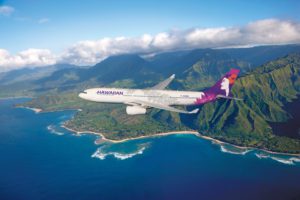 There appears to be no logic to what happens to brands when airlines merge. In the airline world, if the company is bigger, it keeps its name, and the smaller company name disappears. There can be a discussion, but the answer is always the same.
There appears to be no logic to what happens to brands when airlines merge. In the airline world, if the company is bigger, it keeps its name, and the smaller company name disappears. There can be a discussion, but the answer is always the same.
The United-Continental merger appears to have the WORST of both. It will keep the Continental colors, but the United name.
There is no changing an airline’s mind when there is a merger. Airline management is too much into industry groupthink to do anything else.
Airlines are rather like banks. They are building market share in a monopolistic fashion, and their only course is to shut down old brands, eliminate staff, and increase economies of scale while reducing capacity. Each merger creates a rationale for another merger; the Delta-Northwest union pushed United and Continental together. Frankly, in the way that the airline industry works, brands do not matter. Except in some rare cases, the whole industry runs on price, and “branding” is merely an exercise that allows airlines to think they are marketing. Realistically, the way the airline industry is going in the U.S., the industry has much more in common with Aeroflot. There is one benefit to airline mergers; law firms and broker firms make lots of money up front.
We’re not saying here that there is no value in each of the brands. Each brand has a great brand story, and has some fans. No matter how much of a commodity the industry has become, getting rid of the old brand is a mistake.One day, the airlines might need the old brands. The example of BP and Amoco is telling. BP purchased Amoco, but with the disaster in the Gulf of Mexico, the BP brand has been tainted in the U.S. If the disaster lingers, BP will have the Amoco brand to fall back on, as it keeps the Amoco brand alive as a sub-brand on its premium fuel.
What would be some options?
- Use Continental brands on subsidiary elements of the company. For instance, Presidents Club lounges should keep their names; perhaps Red Carpet should become Continental Presidents Club or Presidents Club.
- Rename airport clubs after Continental. Or start calling it Continental Business First.
- There are a web of subsidiary brands of both companies. Frequent Flyer programs are Mileage Plus and OnePass. Perhaps the OnePass brand survives as the name? One Pass is well-known in Latin America. The other option is to allow consumers to keep OnePass or MileagePlus cards, but have one name for the program.
- Interestingly, the sister airlines Copa and AeroRepublica will survive, as they were only partially owned by Continental.
- Use Continental in some subsidiary corporate names and shell names. That keeps the company shells alive, in case United needs it. Small business units under a single company can be valuable, and give identity and structure to something that might be just an ignored business unit. We suggested in the merger of Delta and Northwest that Delta keep the Northwest Airlines weather desk and brand it to Northwest. That way, a business unit that could be forgotten instead becomes a center of excellence for the new company. It could then be
- License the Continental name to other entities to keep it alive.









ValuJet-AirTran merger is a case where the remaning company name (ValuJet) did not continue but AirTran did. Which is too close (for me) in trademark to American Trans Air. Now AirTran is merging with SouthWest Air making SouthWest less southwest based, but the SouthWest is the name that is remaining. AirTran would seem better for the over all name as SouthWest is a very regional brand.